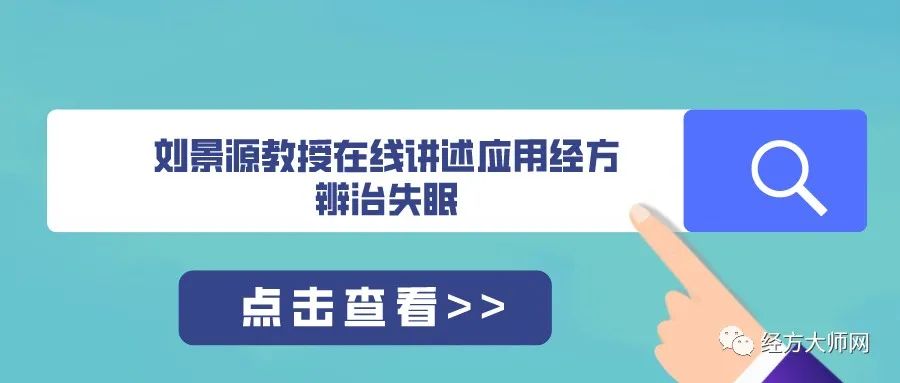Throughout history, practitioners have placed great emphasis on the pathogenic effects of damp-heat. Zhu Danxi believed that “damp-heat and fire are the most common diseases” and that “among the six qi, damp-heat accounts for eight or nine out of ten diseases.” Ye Tianshi in his “Clinical Guidelines and Medical Cases” stated: “If a person is pale and thin with firm and hard muscles, their body is yang, and if they are then exposed to damp pathogens, they are likely to transform into heat; if damp pathogens arise internally, often due to rich foods and alcohol, they will suffer from damp-heat or damp-fire symptoms.” Therefore, individuals with a constitution of excess yang who are exposed to damp pathogens are more likely to develop damp-heat.
Etiology and Pathogenesis Analysis
For “damp-heat diseases,” practitioners have historically believed that the etiology and pathogenesis are as follows: “Damp-heat pathogens enter through the mouth and nose, invading the body”; “external damp pathogens cause stagnation and transform into heat”; “internal water-damp accumulates, attracting external factors”; “excessive internal dampness transforms into heat due to yang.” As Xue Shengbai stated in his “Damp-Heat Disease Treatise”: “When the Taiyin is internally injured, dampness accumulates, and external pathogens invade, leading to damp-heat disease,” and he clearly pointed out that the main route of damp-heat invasion is through the mouth and nose, with “only one or two cases from the exterior; eight or nine cases from the mouth and nose.” Wu Lao identified four causes of this disease: First, living in the southern regions with humid climates, where fog and dew harm individuals, and residing in damp environments leads to many patients suffering from damp-heat, especially after the summer solstice. Second, frequent rainy days and a high proportion of outdoor laborers who often work in the rain or wet conditions, or who go to bed damp after bathing, or who are exposed to warm weather, can easily contract damp pathogens. Third, with rapid economic development and abundant material resources, people often eat irregularly, indulge in rich and fatty foods, and drink excessively, which harms the stomach and generates dampness; irregular eating habits and a preference for cold foods damage the spleen and retain dampness, leading to stagnation and transformation into heat. Li Dongyuan stated: “All of this is due to diet, overwork, and damage to the spleen and stomach,” and believed that “the combination of damp and heat leads to a decline in yang qi.” Fourth, the abuse of antibiotics, hormones, and other medications can lead to spleen deficiency and the internal generation of damp pathogens, which can also transform into heat if retained for too long.
Key Points in Differentiation and Commonly Used Formulas
In his years of clinical practice, Wu Lao continuously observed and summarized that the differentiation of damp-heat diseases can be divided into internal dampness and external dampness, roughly categorized into four types: injury to the muscle surface, injury to the pores, flow into the joints, and deep invasion into the organs. The deep invasion can be further divided into three jiaos: upper jiao damp-heat affecting the heart and lungs, middle jiao damp-heat affecting the spleen, stomach, and gallbladder, and lower jiao damp-heat affecting the liver, kidneys, bladder, and large intestine. Symptoms of damp-heat affecting the muscle surface include headache, chills, heavy and painful body, fatigue, and in cases of heavier dampness, noticeable swelling and numbness; if combined with heat toxins, there may be more severe fever, redness, swelling, and burning of the skin and joints, and in severe cases, yellow and foul discharge; on the skin, there may be eczema or boils, with significant swelling and clear discharge in cases of excessive dampness, and burning and yellow discharge in cases of severe heat; in the joints and tendons, there may be heavy, red, swollen, and painful joints related to weather changes; in the muscles, there may be headache, heavy body, soreness, fatigue, and weakness; in the upper jiao, there may be a heavy head, chest tightness, deep and turbid cough, excessive grayish phlegm, throat obstruction, sore throat, or accompanied by low-grade fever, and even mental confusion; middle jiao damp-heat may present with abdominal distension, poor appetite, fatigue, sticky mouth, thirst without desire to drink much, unsatisfactory bowel movements, a white tongue, and a slippery and rapid pulse; liver and gallbladder damp-heat may present with bitter mouth, poor appetite, aversion to greasy foods, rib pain, irritability, insomnia, or yellowing of the skin and eyes, or alternating chills and fever, with a wiry and rapid pulse; lower jiao bladder damp-heat may present with yellow and turbid urine, frequent urgency and painful urination; large intestine damp-heat may present with yellow and foul stools, burning sensation in the anus, diarrhea, fever, forehead pain, and even abdominal pain with urgency. In men, damp-heat often presents with scrotal dampness and eczema, and in severe cases, decreased sexual function; in women, damp-heat may present with excessive yellow, thick, and foul-smelling vaginal discharge, itching, and even infertility. In terms of differentiation and prescription, Wu Lao believes that damp-heat is often treated from the perspective of the three jiaos. For damp-heat on the surface, the commonly used formula is Jiu Wei Qiang Huo Tang (Nine Flavor Qiang Huo Decoction); for summer heat with dampness and cold symptoms, Xin Jia Xiang Ru Yin (Newly Added Xiang Ru Decoction) is often used; for skin damp-heat, Ma Huang Lian Qiao Chi Xiao Dou Tang (Ephedra, Forsythia, and Adzuki Bean Decoction) or Xiao Feng San (Wind-Dispersing Powder) with modifications are commonly used; for joint swelling and pain due to damp-heat in the qi aspect, Si Miao San (Four Marvels Powder), Chai Hu Gui Zhi Tang (Bupleurum and Cinnamon Decoction), or Gui Zhi Shao Yao Zhi Mu Tang (Cinnamon and Peony Decoction) with additions of Sang Zhi (Mulberry Twig), Wei Ling Xian (Clematis), Jiang Huang (Turmeric), Hai Tong Pi (Erythrina), Fang Ji (Stephania) or Zhong Jiao Xuan Bi Tang (Middle Jiao Circulation Decoction) are often used; for blood aspect damp-heat, Dang Gui Nian Tong Tang (Angelica Pain-Relieving Decoction) is commonly used. For upper jiao damp-heat, hand Taiyin damp-heat causing throat pain is often treated with Yin Qiao Ma Bo San (Yin Qiao and Puffball Powder); hand Taiyin damp-heat causing hiccups or chest tightness is often treated with Shang Jiao Xuan Bi Tang (Upper Jiao Circulation Decoction); for damp-heat diffusing through the three jiaos, with the upper jiao being the main focus, and damp-heat injuring fluids, Xing Ren Tang (Apricot Kernel Decoction) is often used; for initial onset of damp-heat with heavy dampness over heat, San Ren Tang (Three Nut Decoction) is often used; for long-standing damp-heat transforming into pus, Wei Jing Tang (Reed Decoction) with modifications is often used; for dampness and heat combined with yin deficiency, Gan Lu Yin (Sweet Dew Drink) is often used; for damp-heat combined with qi deficiency, Li’s Qing Shu Yi Qi Tang (Li’s Clear Summer Heat and Qi-Boosting Decoction) is often used; for Shaoyang gallbladder damp-heat, Hao Qin Qing Dan Tang (Artemisia and Scutellaria Decoction) is often used. For lower jiao damp-heat, liver channel damp-heat is often treated with Long Dan Cao Xie Gan Tang (Gentiana Drain the Liver Decoction) or Yin Chen Hao Tang (Artemisia Capillaris Decoction); for bladder damp-heat, Dao Chi San (Guide Out the Red Powder) or Bi Xie Fen Qing Yin (Bi Xie Clear the Bladder Decoction) are often used; for bladder damp-heat injuring yin leading to insomnia, Zhu Ling Tang (Polyporus Decoction) is often used; for hand Yangming large intestine qi aspect damp-heat, Ge Gen Qin Lian Tang (Pueraria, Scutellaria, and Coptis Decoction) is often used; for hand Yangming large intestine blood aspect damp-heat, Chi Xiao Dou Dang Gui San (Adzuki Bean and Angelica Powder) is often used. For women with excessive yellow and thick vaginal discharge, Yi Huang Tang (Easy Yellow Decoction) is often used; for infertility or liver-spleen disharmony with internal damp-heat, Dang Gui Shao Yao San (Angelica and Peony Powder) is often used. In summary, Professor Wu emphasizes the treatment of damp-heat in difficult and miscellaneous diseases, using flexible and varied prescriptions with significant efficacy.
Case Example
For a patient with hand Taiyin damp-heat, Ms. Cheng, a 65-year-old woman from Nanchang County, was first diagnosed on August 15, 2017. She had redness in her right eye accompanied by blurred vision for over a month. The patient had excessive sweating due to labor on July 26, 2017, and sweat entered her right eye, leading to redness, swelling, and pain in the right eye. She was hospitalized from August 1 to August 8, 2017, where Western medicine diagnosed her with (1) keratitis (right) and (2) anterior chamber pus (right). After treatment with anti-inflammatory Western medicine (specific medications not detailed), her symptoms recurred, and she was advised to seek traditional Chinese medicine treatment, leading her to consult Wu Lao. At the time of examination, her symptoms included: redness in the white of the right eye, slight heat sensation, presence of ulcer points, blurred vision, no pain or itching, no photophobia, minimal eye discharge; her complexion was slightly yellow, she was thirsty and desired cold drinks but did not drink much, her throat and nose were dry, her mouth was slightly sticky, no bitter taste, slight chest tightness, no palpitations, no cough, no chills or fever, normal appetite, poor sleep with many dreams, bowel movements once a day, yellow and sticky stools, yellow urine with a burning sensation in the urethra, red tip and edges of the tongue, slightly thick yellow greasy coating, and a wiry and strong pulse. After careful examination, Wu Lao diagnosed her with hand Taiyin damp-heat steaming upward to the eyes, thus selecting a modified version of Xing Ren Tang (Apricot Kernel Decoction) from the “Differentiation of Warm Diseases”: Xing Ren 10g, Huang Qin 6g, Lian Qiao 10g, Bai Dou Kou 10g, Fu Ling 10g, Sang Ye 10g, Hua Shi 10g, half a pear skin, and Mi Meng Hua 10g. Ten doses were prescribed, one dose per day, decocted twice for a total of 400mL, to be taken warm in the morning and evening.
On August 28, 2017, during the second consultation: after taking the medicine, her eye discomfort significantly improved; currently, her right eye is slightly red and dry with itching, blurred vision has lessened, no pain or photophobia, minimal eye discharge, reduced thirst, sticky mouth, pale red tongue, slightly yellow thick coating, and a soft and floating pulse. Although symptoms have decreased, the condition remains, so the same prescription was continued. Ten doses were prescribed, one dose per day, with the same method as above. In November of the same year, she returned for stomach discomfort and reported that her eye condition had fully recovered.
Note: In this case, the right eye showed redness and blurred vision for over a month. Although the Western diagnosis was clear, the treatment effects were inadequate, and symptoms recurred. After careful inquiry, Wu Lao believed that although the patient had redness in the right eye, there was no photophobia, minimal eye discharge, and no symptoms of headache, eye swelling, or irritability associated with the Jueyin liver channel, indicating that the disease was not in the Jueyin liver channel. However, the redness in the right eye, slight heat sensation, and slight chest tightness were noted. According to the “Lingshu: Great Confusion” it states: “The white of the eye belongs to the lungs, referred to as the qi wheel.” The lungs are located in the chest, governing qi and belonging to the right side, thus indicating that the disease is located in the Taiyin lung channel. The heat pathogen steaming upward causes thirst and a desire for cold drinks, with a red tip and edges of the tongue, yellow coating, and strong pulse. The heat pathogen emerging from the lower jiao leads to yellow urine and burning sensation in the urethra, indicating that the heat pathogen is relatively strong. The heat pathogen steaming dampness upward results in a slightly thick yellow greasy coating and minimal water intake. As stated in the “Jin Gui Yao Lue: Spasms, Dampness, and Heat”: “Dampness as a disease causes pain all over the body, and one may feel hot, with a complexion like being smoked yellow.” Damp-heat steaming upward affects the head and face, hence the slightly yellow complexion. The dry tongue, dry mouth, and dry nose indicate fluid injury. In summary, the diagnosis was damp-heat diffusing through the three jiaos, with the upper jiao being the most affected, and combined with fluid injury. “A white tongue with thirst, frequent coughing, and cold starting from the back, a white tongue with thirst, is caused by lurking summer heat, known as lung injury, and Xing Ren Tang is the main treatment” (from “Differentiation of Warm Diseases”). Although the patient did not have a cough, Wu Lao clearly stated that Xing Ren Tang treats damp-heat diffusing through the three jiaos, with the upper jiao being the main focus, combined with fluid injury. Therefore, a modified version of Xing Ren Tang was prescribed, yielding immediate results. This demonstrates Wu Lao’s thorough research on damp-heat diseases, precise differentiation, and effective and flexible use of prescriptions.
————————-
Previous Featured Articles Overview



